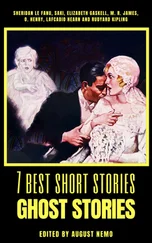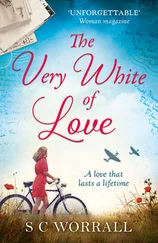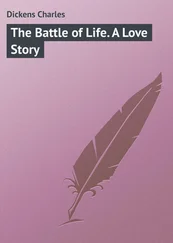Back at school for the fall, he found himself in an uncongenial housing situation. He and Costello, now a senior, had joined a large rooming group, some eight people divided into two suites. Wallace could not find a way to be comfortable among so many young men. The group included preppy students, who on principle rubbed Wallace the wrong way (Wallace had ended a friendship with one of his freshman stoner friends when he had joined a fraternity). His brittle balance shattered, Wallace began to withdraw into himself. He would sit quietly at the Valentine dining table in the midst of his friends’ chatter and say nothing. They would urge him to do his impersonations but he wouldn’t respond. Just as Costello had the year before, they were learning that there was another side to their friend.
Quietly, Wallace again thought about hurting himself. McLagan was on his mind. During their hours in the “womb,” Wallace had debated suicide with McLagan. Music playing, they kicked around the fate of Ian Curtis of Joy Division, who hanged himself at the age of twenty-three. In high school McLagan himself had once stood on the edge of an overpass with a bottle of champagne in his hand, contemplating throwing himself onto the Illinois Tollway. For McLagan, killing yourself could be the fitting — maybe even necessary — exit for the sensitive artist from the brutal world. Wallace, though he’d known a despair deeper than his friends could imagine, wasn’t so sure. Suicide looked to him like an escape rather than a solution. He knew depression too well to see it as glamorous. He looked around for ways to harm himself but decided instead to withdraw from school again and find a psychiatrist.
Leaving school a second time for Wallace was even more humiliating. No one had known him sophomore year; no one cared if he came or went. But by the fall of 1983 he was one of the school’s champion students. He had just won a scholarship for most promising philosophy student and would have to give the money back. The scene from sophomore year repeated itself with variations. Costello drove Wallace to Bradley Airport outside Hartford for the flight home. (The car, an AMC Pacer, would later surface, with Wallace’s mother’s Gremlin, in The Pale King. ) The first time Wallace had left, a year and a half before, he had fought back tears; this time he showed little emotion. He kept telling Costello he had thought he’d had a strategy and now it was clear he had been deluding himself. For the last twenty miles he was silent and wouldn’t let Costello park the car to see him to his gate.
Wallace had told none of his other friends that he was leaving. He did not give his trust easily but felt he could bring Corey Washington into his confidence by now. So, shortly after he got home, he explained his departure in a letter: “I came very close to doing something stupid and irrevocable at Amherst but finally opted, sensibly or wimpishly, depending on whether your point of view is that of my parents or that of Charlie M[cLagan], to try to get better so that I could exist.” He added that he now found himself in the hands of a doctor he trusted. He made light of some of the revelations to his friend: “One hideous symptom of severe depression is that it is impossible both to do anything and to do nothing; as a devotee of Jumping Joe’s [their logic professor’s] Celebrated Excluded Middle I am sure you can assess that this is an Intolerable Situation.” More seriously the psychiatrist, whom Wallace nicknamed “Dr. Tetemaigrir” (French for Head Shrinker), had, he wrote Washington, “real valid and non-sterile things to say” about depression. The doctor took him off Tofranil and likely put him on a different antidepressant. Wallace was beginning to understand things that had either never been told to him before or that he was only now ready to hear: that he had a biological condition that was with him for the rest of his life. He couldn’t just ignore it. Though he shared his family’s worry that, as Amy says, “his potential as an autonomous adult was pretty much vaporizing,” Wallace began healing, the “festering pus-swollen c[h]ancre at the center of my brain” diminishing, as he wrote to Washington. He apologized for the façade he had been putting up, adding in another note, “You now see before you, indirectly at least, the real ‘Waller’: an obscurely defective commodity that has also been somewhat damaged in transit.”
Even in the midst of his depression and treatment, Wallace continued to read widely. He picked up Pynchon’s Gravity’s Rainbow and finished it in eight nights, or so he told McLagan. He wrote as well, focusing as he had not before. The work Wallace undertook now was at a different level. His hope that he could lose himself in the rigors of logical philosophy shredded, he may have felt he had no other choice. He had nowhere left to hide. In the event, he was now able to achieve things he had not before. One result was “The Planet Trillaphon as It Stands in Relation to the Bad Thing,” the story of a young man who withdraws from college with psychiatric problems. Though it was not pure autobiography, the authorial “I” and the “I” of the narrator parallel each other in the story in a way they never would again in Wallace’s fiction; the sense of dismay at being mentally ill is fresh. The layers of asserting and then hedging those assertions to assert slightly more emphatically and imaginatively that would constitute Wallace’s style are beginning to form. For much of his story, Wallace drew on his memories of his recent traumatic breakdowns. His nameless narrator is also suffering from “the Bad Thing”—his phrase for depression. He has tried to commit suicide in his parents’ house—“a really highly ridiculous incident involving electrical appliances in the bathtub about which I really don’t wish to say a whole lot”—and at story’s beginning he finds himself in a psychiatric hospital. In the ward, Dr. Kablumbus gives the narrator a choice between electroconvulsive therapy and a course of antidepressants. The narrator chooses the latter, but the drug he is given, Tofranil, makes him feel tired and affectless, just as it had Wallace the previous summer. Still the narrator — earnest in the style of Wallace when he first entered Amherst — assures us that being medicated is not so bad. “They’re fine, really,” he claims of antidepressants, “but they’re fine in the same way that, say, living on another planet that was warm and comfortable and had food and fresh water would be fine: it would be fine, but it wouldn’t be good old Earth, obviously.”
A fellow patient may come to the rescue, though. In the ward the narrator meets May Aculpa, a young woman likely recycled from the story Wallace had shown Costello the year before. May Aculpa and the narrator chat and flirt, but just as a human connection is being made, the pretty young depressive is discharged, only to die in a car accident shortly after. “I tried to call May’s parents,” the narrator tells us at story’s end, “just to say that I was incredibly sorry,” but he gets the parents’ answering service. 7
“Planet Trillaphon,” which Wallace would publish in the Amherst Review when he got back to college, is more original in subject than in style. 8Its structure and pacing are those of well-made student fiction; Wallace was still deconstructing existing stories trying to find what held them together. He boasted to the interviewer David Lipsky years later that his gift in college was to be “a weird kind of forger. I can sound kind of like anybody.” Here he was rifling Pynchon for names and J. D. Salinger for tone, but the Salingerian faux naïveté becomes magnified with a lens worthy of Gogol as Wallace reimagines his nightly battles with acne as something surreal:
Читать дальше












